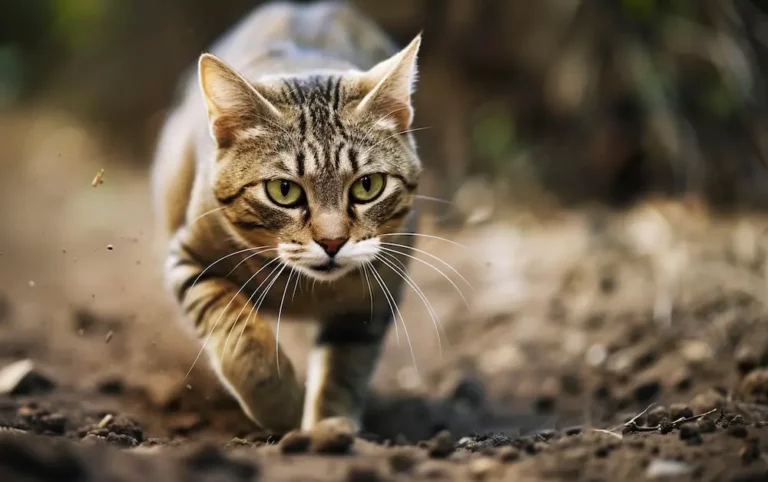5 Easy Ways To Speak To Your Cat
Communicating with your
You’ll find that understanding their body language, using specific vocal cues, and reinforcing behaviors with treats can make a world of difference.
Engaging in interactive playtime and respecting their need for solitude are also essential components.
Curious about how these methods can transform your relationship with your
Let’s explore each of these easy, effective ways to speak to your
Understand Cat Body Language
To effectively communicate with your
For instance, when your
Pay attention to their ears as well. Forward-facing ears typically mean your
Slow blinking is a sign of trust and affection, so try blinking back slowly to show your
Additionally, a
A relaxed, stretched-out
Understanding these signals helps you respond appropriately, creating a stronger bond with your furry companion.
Use Vocal Cues
When communicating with your
Cats aren’t only sensitive to the tone of your voice but also to the specific sounds you make.
To start, observe how your
A soft, high-pitched voice often signals affection and comfort, while a firm, low tone may indicate disapproval or a command.
Use consistent phrases for specific actions or situations.
For example, saying ‘come here’ in a calm, inviting tone can encourage your
Repetition helps your
Additionally, pay attention to your
Cats have various meows, purrs, and chirps, each indicating different needs or emotions. Responding appropriately to these sounds strengthens your bond and fosters mutual understanding.
Practice Positive Reinforcement
Positive reinforcement strengthens your
When your
This helps them associate the behavior with a positive outcome, making it more likely they’ll repeat it in the future.
Start by choosing rewards your
Small treats, gentle petting, or verbal praise can be very important.
Timing is essential; reward your
For example, if your
Consistency is key.
Make sure everyone in your household uses the same rewards and criteria for good behaviors.
This avoids confusing your
Over time, your
Engage in Playtime
Regularly engaging in playtime with your
Playtime mimics the hunting activities cats would naturally perform in the wild, providing essential exercise and mental challenges.
Use toys like feather wands, laser pointers, or interactive puzzles to tap into your
Set aside dedicated play sessions each day, aiming for at least 15-20 minutes.
This consistency helps your
During these sessions, pay close attention to your
These signs indicate they’re fully engaged and enjoying the activity.
Always end playtime with a satisfying conclusion, like giving them a small treat or allowing them to ‘catch’ the toy.
This reinforces positive behavior and makes the experience more rewarding. Additionally, avoid using your hands or feet as toys, as this can encourage biting or scratching.
Respect Their Space
While playtime is important, it’s equally essential to respect your
If your
Watch for signs that your
It’s also helpful to provide designated areas where your
Conclusion
By understanding your
Remember, consistent efforts and patience are key. Your
Keep observing and adapting to their needs, and you’ll enjoy a harmonious and fulfilling relationship with your kitty pal.






